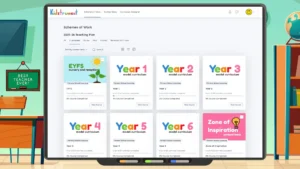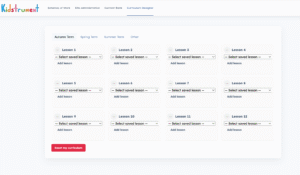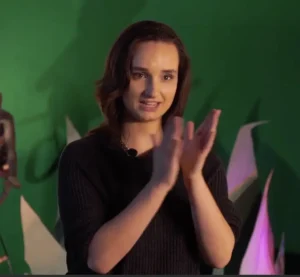Music in UK primary schools has never been more varied — with high expectations from the Model Music Curriculum (MMC), new digital tools, and a wide range of curriculum schemes. Teachers now have more choice than ever before — but also more decisions to make about how best to deliver quality, consistent music across the school.
This article explores where music education stands today, what Ofsted says about good practice, and how the most-used schemes compare — from Charanga and Sing Up to Twinkl, Kapow Primary, and Kidstrument.
The National Picture: MMC, NPME & Ofsted
The Department for Education’s National Plan for Music Education (2022) sets an ambitious vision that every child should sing, play, create, and perform. The Model Music Curriculum (MMC) provides non-statutory guidance on sequencing, repertoire, and progression from KS1–KS3. Meanwhile, Ofsted’s 2023 report “Striking the Right Note” highlights strengths in singing and creativity — but ongoing challenges with curriculum time, sequencing and assessment.
Popular Primary Music Schemes (and What They Offer)
Below are some of the most widely used music schemes in UK primary schools. Each one interprets the national guidance slightly differently — offering various levels of structure, flexibility, and teacher support.
- Charanga – Musical School Structured weekly lessons for ages 5–11 with digital resources, listening tracks, and assessment tools. Highly popular with schools through local Music Hub subscriptions.
- Sing Up – Sing Up Music Combines singing, composition, and listening across EYFS–KS2. The repertoire is vocal-led and accessible for generalist teachers. Updated 2023 for MMC alignment.
- Twinkl Music Printable and digital lesson packs aligned to the National Curriculum, ideal for quick planning and worksheets. Less interactive, but strong for offline preparation and evidence folders.
- Kapow Primary Music Offers video-based lessons, assessment grids and long-term plans across KS1–KS2. Emphasises progression and practical music-making using everyday classroom instruments.
- Oak National Academy – Music Free online lessons and video resources launched during lockdown, now mapped to the MMC. Great for cover lessons or home learning extensions.
- BBC Ten Pieces A long-running initiative promoting listening and creative response to classical repertoire — excellent for upper KS2 or enrichment weeks.
Common Challenges Highlighted by Ofsted
According to Ofsted’s 2023 subject report:
- Curriculum time for music is often below expectations (less than an hour per week).
- Progression is uneven — some pupils repeat content rather than develop it.
- Non-specialist teachers lack confidence or clear support materials.
- Assessment focuses on written tasks rather than musical outcomes.
These findings underline why choosing the right scheme matters — one that supports both staff and pupils, while showing clear intent, implementation and impact.
Where Kidstrument Fits In
Kidstrument sits at the intersection of structured progression and creative flexibility. It’s designed for busy teachers who want musical depth without heavy prep or paperwork. It stands out in three ways:
- Fully interactive classroom delivery – 600+ browser-based activities across rhythm, pitch, listening, singing, theory and composition. Teachers simply open an activity on-screen — no slides or downloads needed. Browse the Activity Library.
- Schemes and Curriculum Designer – Complete Schemes of Work from EYFS to Year 6, or build your own sequence using the Curriculum Designer. Every activity maps to clear Learning Outcomes for Ofsted evidence.
- Tracking and Reporting – Automatically records class completion and progression, generating dashboards for subject leaders and SLT. See tracking tools.
Schools often use Kidstrument alongside existing resources like Charanga or Twinkl — using it for interactive delivery while retaining familiar printed materials. It complements rather than replaces your existing music offer.
What Makes the Difference in Practice
- Curriculum time: Protect a weekly slot for music — even 30 minutes of quality practical work is better than irregular themed days.
- Teacher confidence: Use guided activities like Clap the Beat or Learn Rhythm: Supermarket to build familiarity and classroom control.
- Evidence and reporting: Save short clips, screenshots, and reports to demonstrate progress across singing, rhythm, listening and composition strands.
Summary: A Healthy, Evolving Landscape
The state of music education in UK primary schools is optimistic — teachers are creative, pupils are enthusiastic, and the resources available have never been richer. Whether you use Charanga, Sing Up, Twinkl, Kapow, Oak, or Kidstrument, the goal is the same: more children making more music, more often.
Explore how Kidstrument can help your school deliver on that vision:





